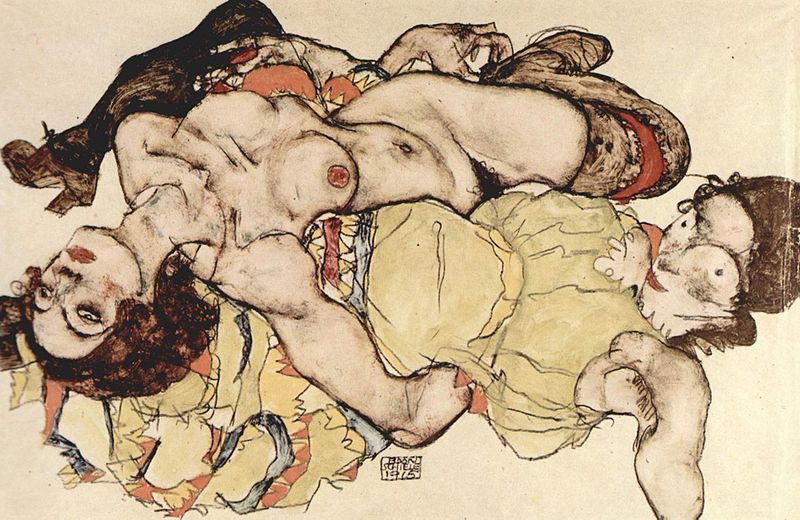
Egon Schiele, Zurückgelehnte Frau, or Two Women, 1915
I have never seen a place like Paris for varieties of sexual provender. As soon as a woman loses a front tooth or an eye or a leg she goes on the loose. In America she'd starve to death if she had nothing to recommend her but a mutilation. Here it is different. A missing tooth or a nose eaten away or a fallen womb, any misfortune that aggravates the natural homeliness of the female, seems to be regarded as an added spice, a stimulant for the jaded appetites of the male.
I am speaking naturally of that world which is peculiar to the big cities, the world of men and women whose last drop of juice has been squeezed out by the machine--the martyrs of modern progress. It is this mass of bones and collar buttons which the painter finds so difficult to put flesh on.

Henri Matisse, La Bonheur de Vivre (The Joy of Life), 1906
It is only later, in the afternoon, when I find myself in an art gallery on the Rue de Sèze, surrounded by the men and women of Matisse, that I am drawn back again to the proper precincts of the human world. On the threshold of that big hall whose walls are now ablaze, I pause a moment to recover from the shock which one experiences when the habitual gray of the world is rent asunder and the color of life splashes forth in song and poem. I find myself in a world so natural, so complete, that I am lost.
[...]
In every poem by Matisse there is the history of a particle of human flesh which refused the consummation of death. The whole run of flesh, from hair to nails, expresses the miracle of breathing, as if the inner eye, in its thirst for a greater reality, had converted the pores of the flesh into hungry seeing mouths. [...] He is a bright sage, a dancing seer who, with a sweep of the brush, removes the ugly scaffold to which the body of man is chained by the incontrovertible facts of life. He it is, if any man today possesses the gift, who knows where to dissolve the human figure, who has the courage to sacrifice an harmonious line in order to detect the rhythm and murmur of the blood, who takes the light that has been refracted inside him and lets it flood the keyboard of color. Behind the minutiae, the chaos, the mockery of life, he detects the invisible pattern; he announces his discoveries in the metaphysical pigment of space.

Henri Matisse, La Leçon de Musique (The Music Lesson), 1917
Text: Henry Miller, Tropic of Cancer



No comments:
Post a Comment